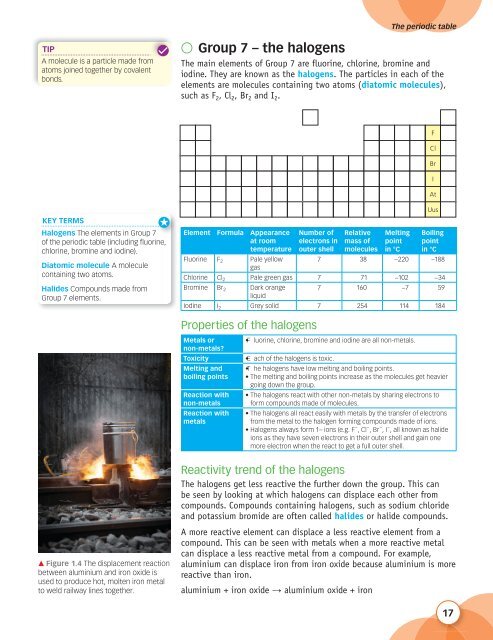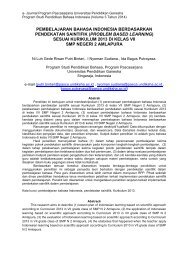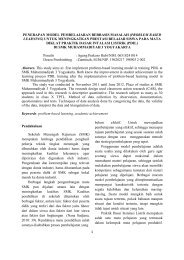You also want an ePaper? Increase the reach of your titles
YUMPU automatically turns print PDFs into web optimized ePapers that Google loves.
The periodic table<br />
TIP<br />
A molecule is a particle made from<br />
atoms joined together by covalent<br />
bonds.<br />
● Group 7 – the halogens<br />
The main elements of Group 7 are fluorine, chlorine, bromine and<br />
iodine. They are known as the halogens. The particles in each of the<br />
elements are molecules containing two atoms (diatomic molecules),<br />
such as F 2 , Cl 2 , Br 2 and I 2 .<br />
F<br />
Cl<br />
Br<br />
I<br />
At<br />
KEY TERMS<br />
Halogens The elements in Group 7<br />
of the periodic table (including fluorine,<br />
chlorine, bromine and iodine).<br />
Diatomic molecule A molecule<br />
containing two atoms.<br />
Halides Compounds made from<br />
Group 7 elements.<br />
Element Formula Appearance<br />
at room<br />
temperature<br />
Fluorine F 2 Pale yellow<br />
gas<br />
Number of<br />
electrons in<br />
outer shell<br />
Relative<br />
mass of<br />
molecules<br />
Melting<br />
point<br />
in °C<br />
Uus<br />
Boiling<br />
point<br />
in °C<br />
7 38 −220 −188<br />
Chlorine Cl 2 Pale green gas 7 71 −102 −34<br />
Bromine Br 2 Dark orange 7 160 −7 59<br />
liquid<br />
Iodine I 2 Grey solid 7 254 114 184<br />
Properties of the halogens<br />
Metals or<br />
non-metals?<br />
Toxicity<br />
Melting and<br />
boiling points<br />
Reaction with<br />
non-metals<br />
Reaction with<br />
metals<br />
• F luorine, chlorine, bromine and iodine are all non-metals.<br />
• E ach of the halogens is toxic.<br />
• T he halogens have low melting and boiling points.<br />
• The melting and boiling points increase as the molecules get heavier<br />
going down the group.<br />
• The halogens react with other non-metals by sharing electrons to<br />
form compounds made of molecules.<br />
• The halogens all react easily with metals by the transfer of electrons<br />
from the metal to the halogen forming compounds made of ions.<br />
• Halogens always form 1– ions (e.g. F − , Cl − , Br − , I − , all known as halide<br />
ions as they have seven electrons in their outer shell and gain one<br />
more electron when the react to get a full outer shell.<br />
▲ Figure 1.4 The displacement reaction<br />
between aluminium and iron oxide is<br />
used to produce hot, molten iron metal<br />
to weld railway lines together.<br />
Reactivity trend of the halogens<br />
The halogens get less reactive the further down the group. This can<br />
be seen by looking at which halogens can displace each other from<br />
compounds. Compounds containing halogens, such as sodium chloride<br />
and potassium bromide are often called halides or halide compounds.<br />
A more reactive element can displace a less reactive element from a<br />
compound. This can be seen with metals when a more reactive metal<br />
can displace a less reactive metal from a compound. For example,<br />
aluminium can displace iron from iron oxide because aluminium is more<br />
reactive than iron.<br />
aluminium + iron oxide → aluminium oxide + iron<br />
17





